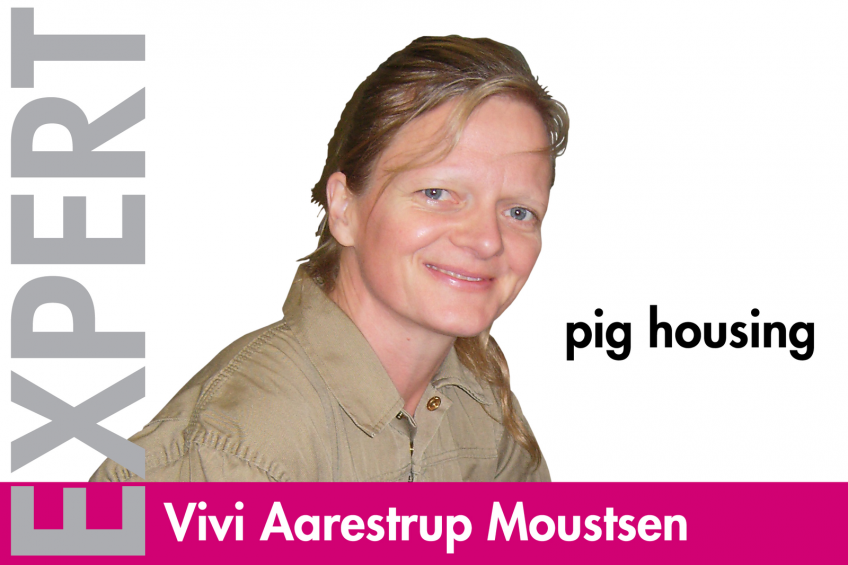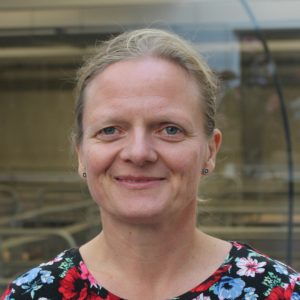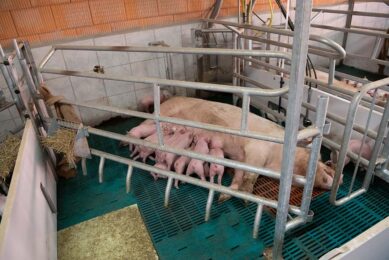Super sows deserve the best

Think of your hyper-prolific sows as top performing athletes – and treat them as such, Vivi Aarestrup Moustsen reveals. If producers do, these sows will nurse their piglets better, leading to higher performance.
When litters are as large as 17+ piglets, the farrowing process can take just as long (or even longer) than running a marathon. Since we expect – and need – the sows to be fit and high performing immediately after farrowing and for the following lactation period, it is important to have full focus on their nutrient requirements and focus on optimal accommodation of the sows.
Phase feeding is a precise strategy that accommodates the sow’s nutrient requirements during different phases of the lactation period. However, one of the challenges is that the feeding system in many commercial pig herds often does not allow phase feeding of lactating sows.
Farrowing duration
The litter size of DanAvl Hybrid sows is on average 17.3 total born piglets per litter, leading the farrowing durations to be between 4.5 to 7.5 hours depending on litter size and the parity of the sows. This can be a physical strain on the sow and at the same time – both during farrowing and in the following hours. However, it is important that the sows are attentive towards their newborn piglets, in control of their own posture changes and willing to let the piglets suckle.
Fibre, amino acid and protein content in diets
Consider the hyper-prolific sows as top athletes and treat them as such. Nobody questions that the diet and the facilities are important if you are aiming to win the Olympics. It is the same for the sows. Their housing facilities, feed etc. need to be optimised in order for the sows to perform at a high level.
What are the nutritional needs of the sows? Can we accommodate their needs, can we implement this in commercial pig herds – and yet maintain or secure that the pig producers continues to be competitive?
Trials in Denmark and other countries have also shown that feeding higher levels of fibres to sows during late gestation and up until the farrowing have a positive effect on the farrowing process, stillbirth rate and colostrum yield.
Feeding the lactating sow
In addition, the Danish Pig Research Centre (PRC), part of SEGES, together with Danish universities have reviewed existing literature on feeding the lactating sow and conducted a number of trials to assess the impact of amino acids and protein on the modern DanAvl sows.
The milk production of lactating sows has increased significantly, and sows wean a higher number of piglets per litter than they used to. Thus, the weaning weight of the individual piglets in Denmark, has been declining in correlation to the larger litters born. The economic situation for many pig producers increases their focus on feed costs. So, can we feed the lactating sows to wean piglets with a higher weaning weight without sows loosing too much of their own body weight, since re-establishing body condition is rather expensive?
New standards to meet the nutritional needs of the lactating hyper-prolific sows
The Pig Research Centre, together with University of Copenhagen has set out to determine the optimal protein- and amino acid content of feed for lactating sows.
In 2015, as a result of this ongoing work, the recommendations for protein and amino acid levels in feed for lactating sows were increased by 14-17% in diets fed from day 2 post farrowing.
The new recommendations for protein and amino acid content in feed for lactating sows can lead to an improvement in the production costs for the pig producers, since the litter weight gain increases, and sow weight loss decreases. The sow withdraws less from its own protein pool and less feed is therefore needed to re-establish the body condition during gestation.
Does sow housing have an impact on nuritrition?
Like for other improvements, there are also implications before new knowledge can be implemented. First of all, to thoroughly benefit from the new standards, implementation of phase feeding is required, and today this is only practiced in a few sow herds in Denmark. In addition, the standards are set for crated lactating sows, and in the future sows are likely to be loosed housed during lactation.
Although is not likely that indoor loose housing as such leads to a significant increase in nutrient requirements, loose housing can lead to increases in feed requirement caused by an increase in milk production. So a possible next step can be an evaluation of the need for adjustments of the standards in relation to housing systems.
For further information, read:
Strathe, Anja Varmløse; Bruun, Thomas Sønderby; Zerrahn, Jens-Erik; Tauson, Anne-Helene; Hansen, Christian Fink, 2016. The effect of increasing the dietary valine-to-lysine ratio on sow metabolism, milk production, and litter growth. Journal of Animal Science, Vol. 94, No. 1, p. 155-164.
Strathe, Anja Varmløse; Strathe, Anders Bjerring; Theil, P. K.; Hansen, Christian Fink; Kebreab, E., 2015. Determination of protein and amino acid requirements of lactating sows using a population-based factorial approach. Animal, Vol. 9, No. 8, p. 1319-1328.











